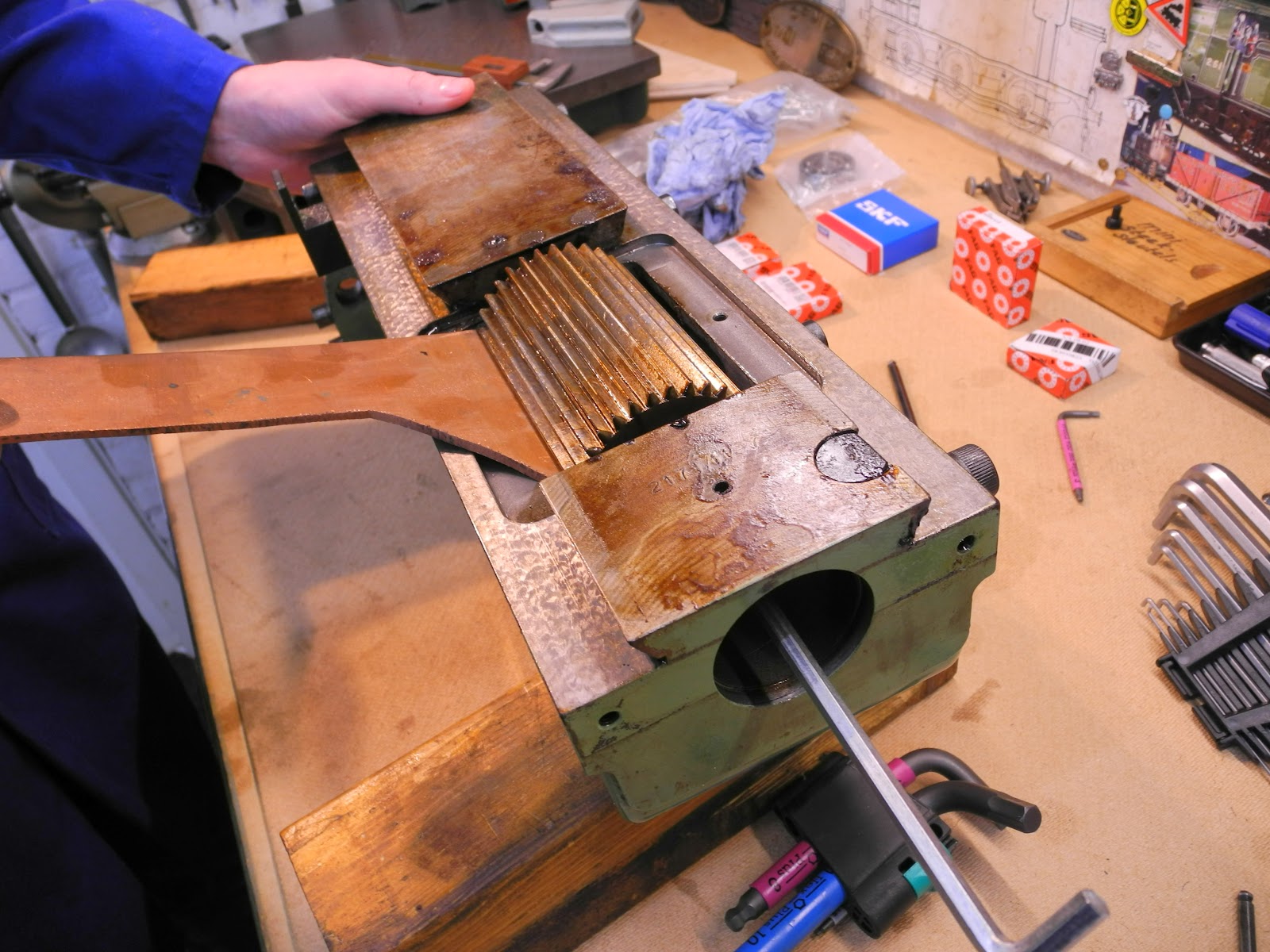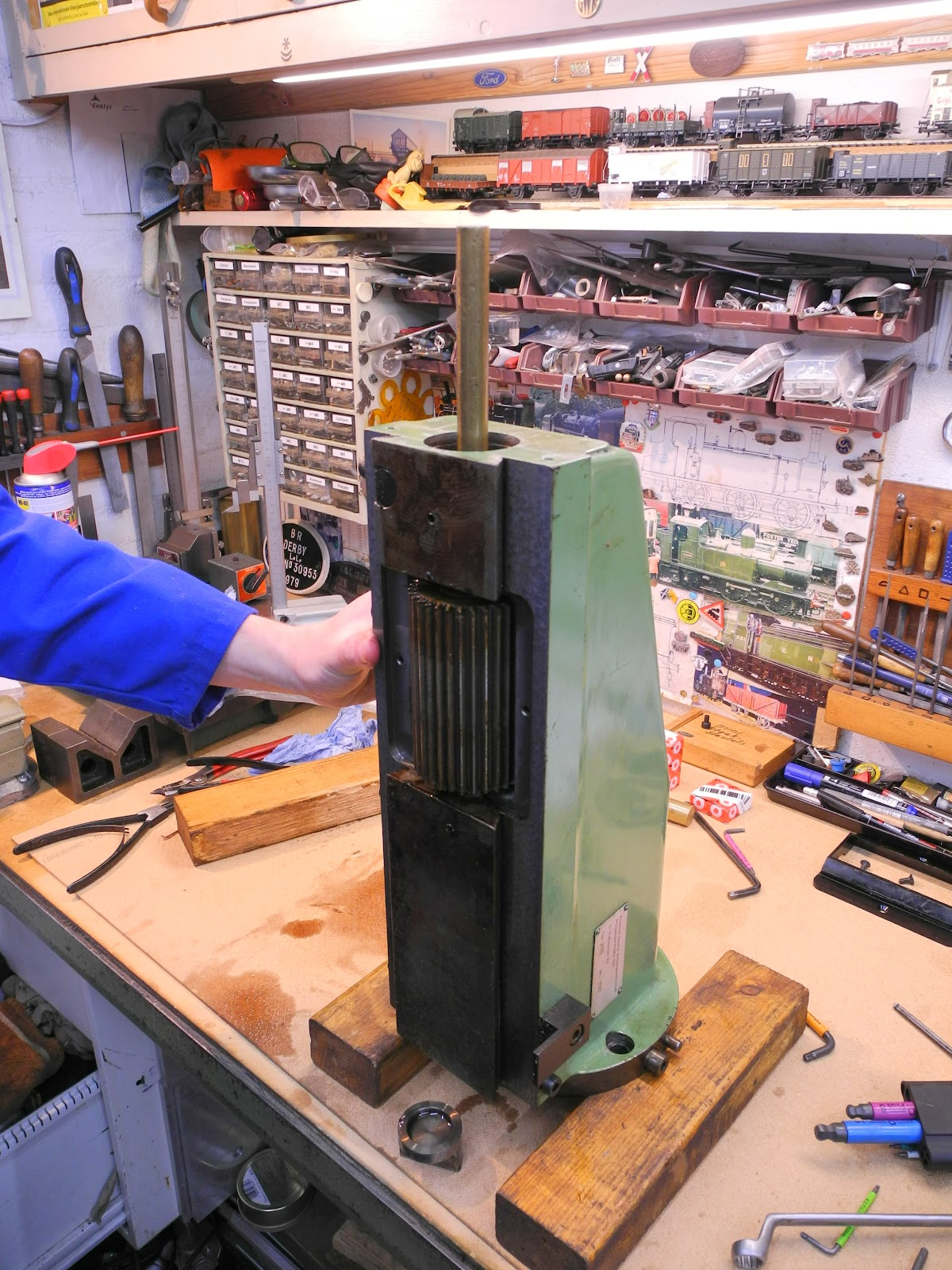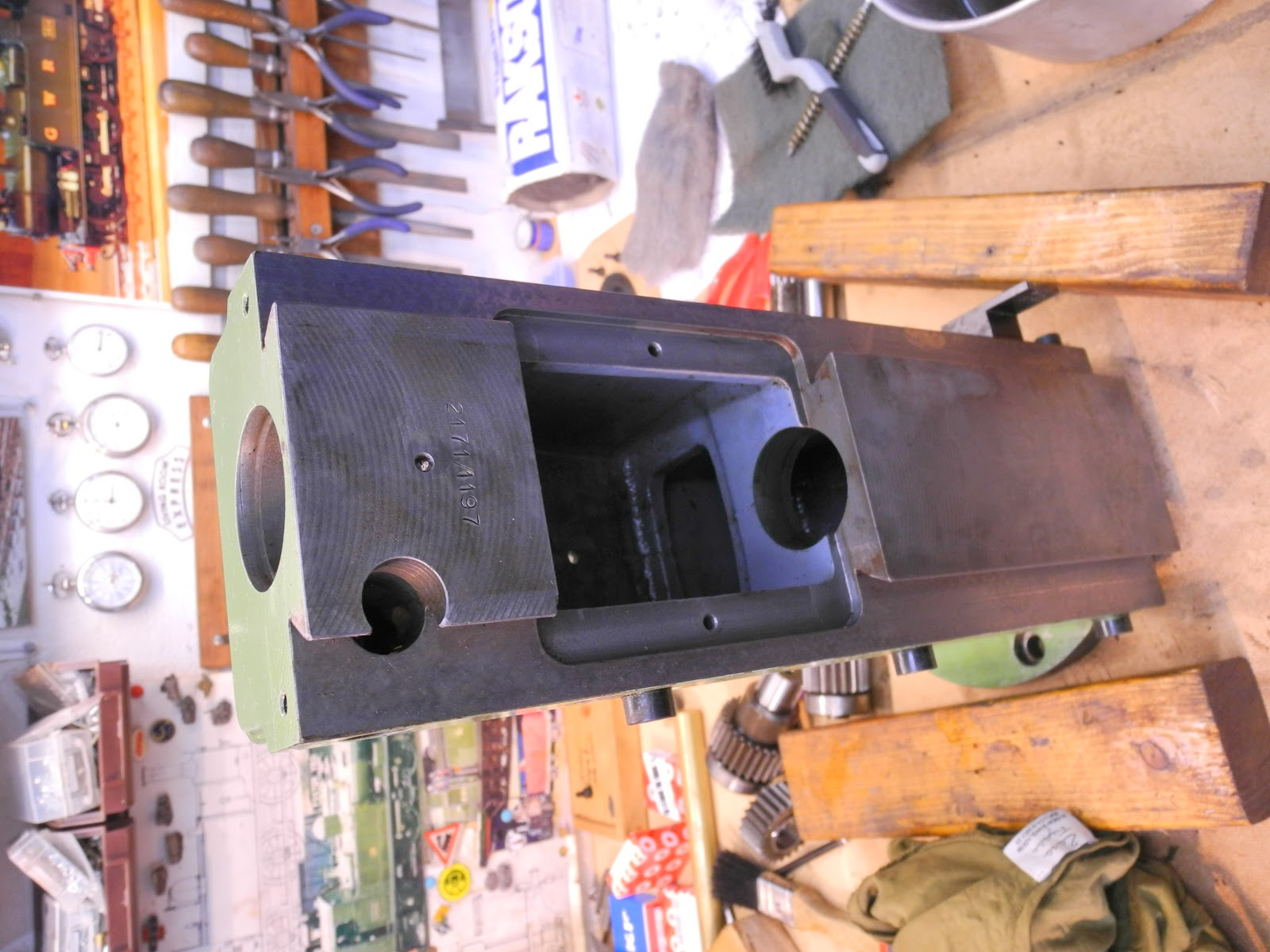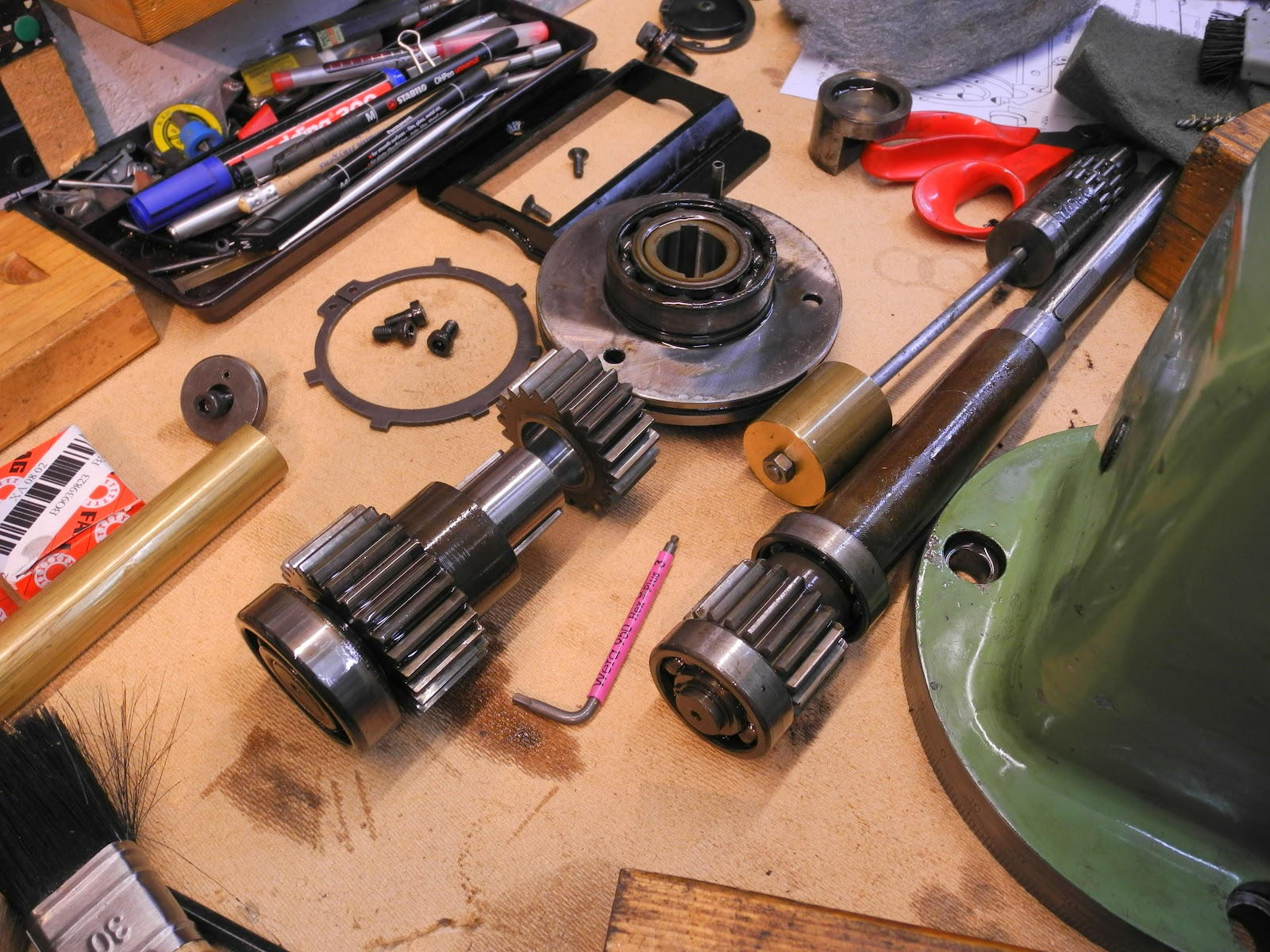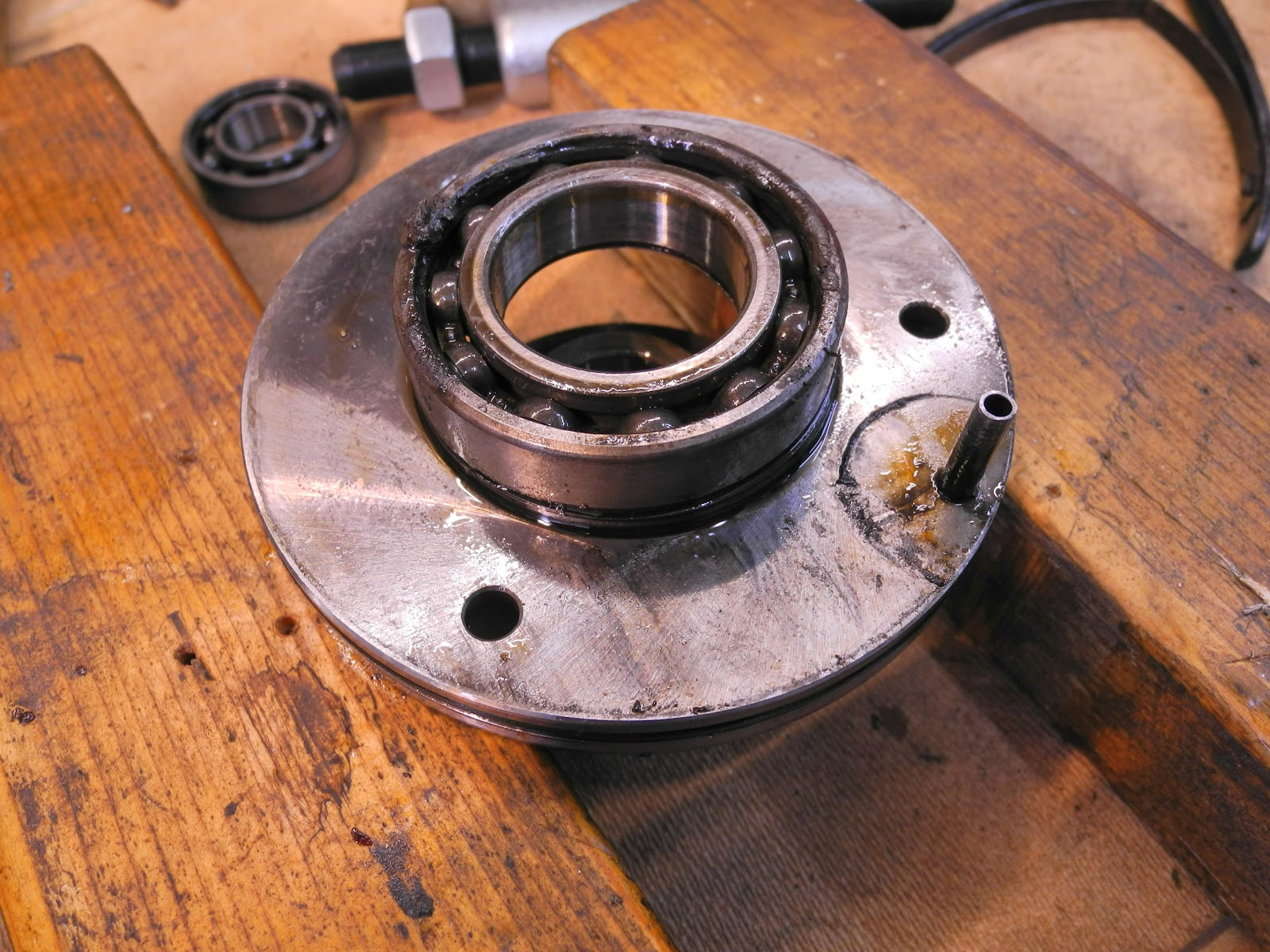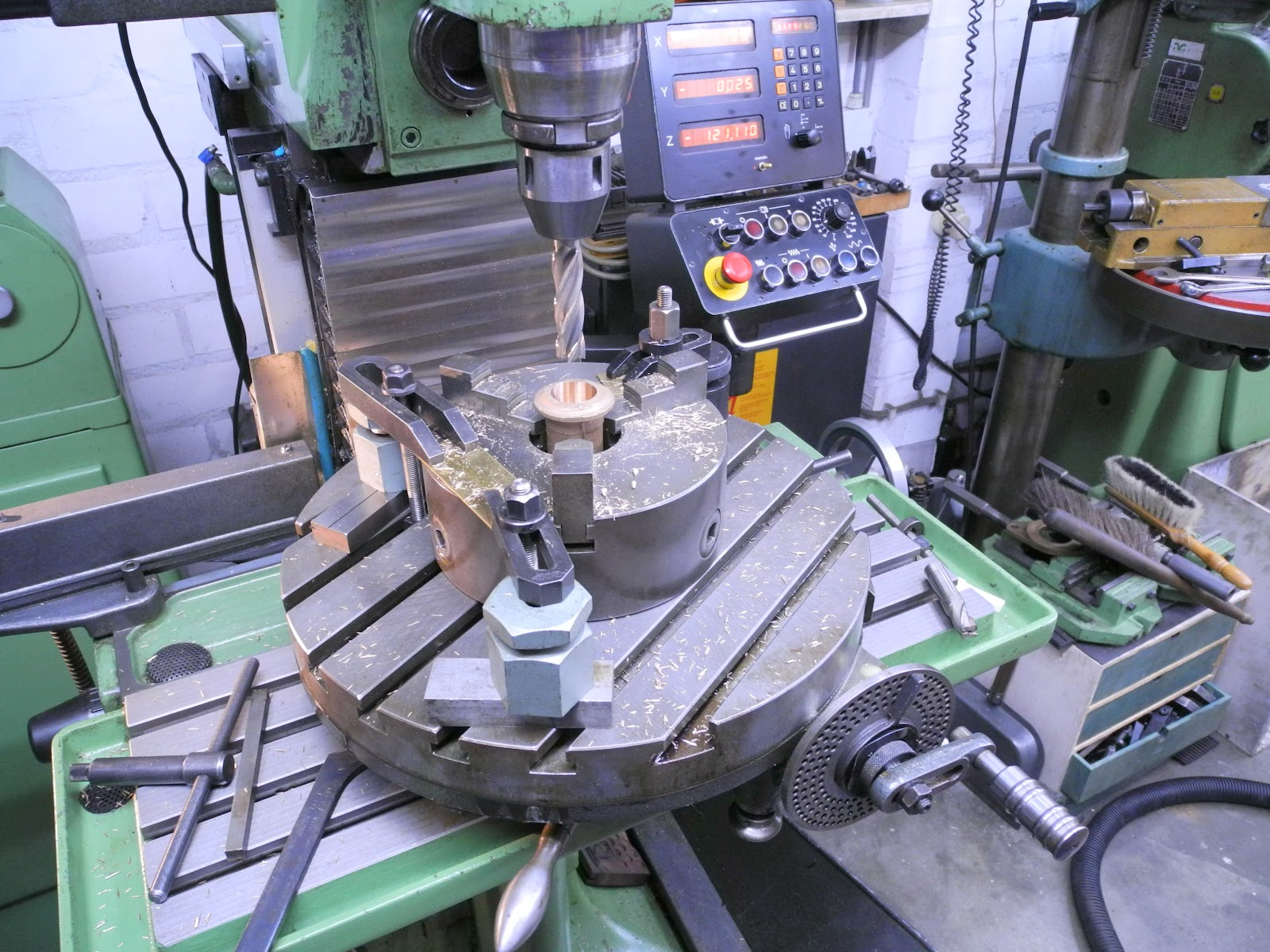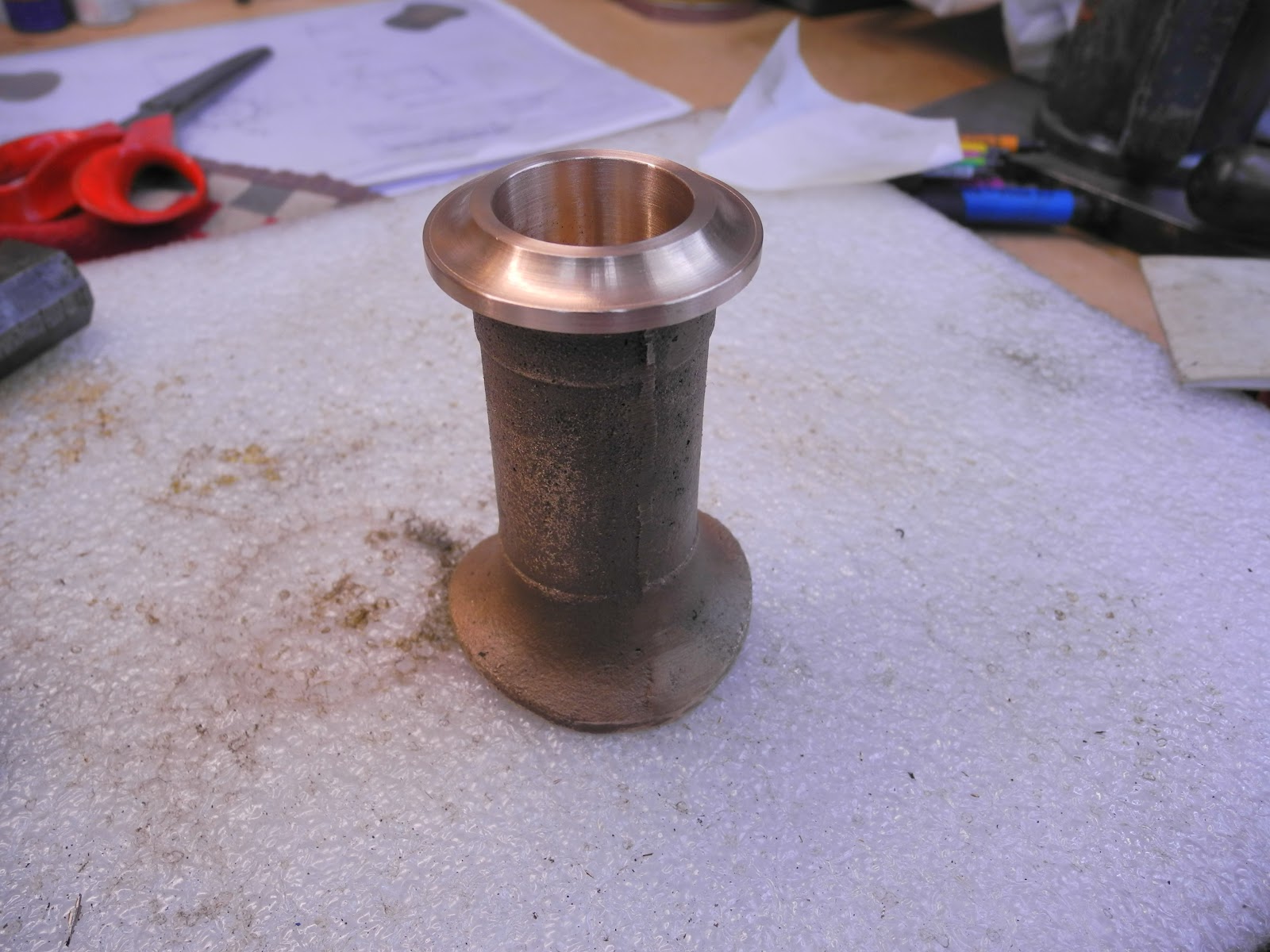To continue with the boiler I first had to fix my milling machine. When running it made (especially at start-up) a strange noise, coming from a bearing or something alike. With inserting some extra oil in the vertical head, this could be overcome but it has got noisier over time. Something had to be done about this.
Luckily a fellow model engineer Ramon knew how to do this job and how to dismantle the complete vertical head and gears. And this not a job I dear to undertake alone, so his help was very much welcomed.Pages
Welcome
Live steam models on 7¼" gauge of the Württembergische T3 and on 5"gauge Great Eastern Railway Y14 class
Welcome to this blog. It will inform you about the progress of designing and building live steam model locomotives. The blog contains the description of a model Würrtembergische T3 on 7¼" gauge (constructed between 2006 and 2017), the wagons for this loco (built between 2018 and 2022), and the current project a 5" gauge model of a Great Eastern Railway Y14 class loco (started in 2020)
On the left you'll find the index where you can browse the different articles and on the right you'll find all the extras. You'll find a brief description of my other locos on the top tabs.
Click for the direct link to start of construction series below
T3 7¼" steam locomotive
T3 7¼" steam locomotive
Enjoy this site. Erik-Jan Stroetinga. The Netherlands. Europe.
Saturday, 18 May 2024
Mantenance of the milling machine
Removing the vertical head, with a simple support to take the weight.
The suspected bearings are not visible, but are on top of the gear wheel
Disassembling the spindle. The main spindle itself however, is in a sealed cassette, which did not have to be opened. It can be taken out as one part. This is still ok, and has no standard bearings, but special needle bearings.
Extracting the old two bearings in one go, with a heavy bearing puller, that was specially bought for the job.
We did replace the main bearings from the right-angle gear of the vertical spindle. Afterwards the complete assembly was mounted back on the machine.
This gave some improvement, but not what we hoped for. The noise still persisted, deeper in the machine. The vertical slide, with its own gearing and transmission shafts, was probably the source.
So the next, more complicated, step was to disassemble this gear train that drives the vertical head.
It quickly revealed that these bearings were not in a great condition and a lot of gummed-up oil and hardened residue was to be seen. After 45 years a replacement is necessary.
Unlocking the retaining screw, by holding the main gear in position.
Gentle tapping on the drive shaft from the back, it came out of the casting
The bearing that caused all the trouble and noise. It was very hard to rotate it by hand.
The casting was completely cleaned out with petrol.
Everything assembled. The job took two days and I was very glad that Ramon helped me. His knowledge and experience were desperately needed. He refurbished his own machine a few weeks earlier.
The milling machine with the new bearings. Nothing to be seen from the outside, but it transformed the noise levels of the machine considerably. An oil change of the oil in the gearbox was also done.
The first job was opening out the chimney of the 'Simplex'. This is a 5" gauge locomotive that my son is currently building. The casting was too big to hold in the chuck of his Myford lathe. Even for my lathe it was too big, but with an old large chuck on the rotary table, it was possible to mill out the internal diameter of the casting. This gave a reference surface for further machining in the lathe.
Subscribe to:
Comments (Atom)











